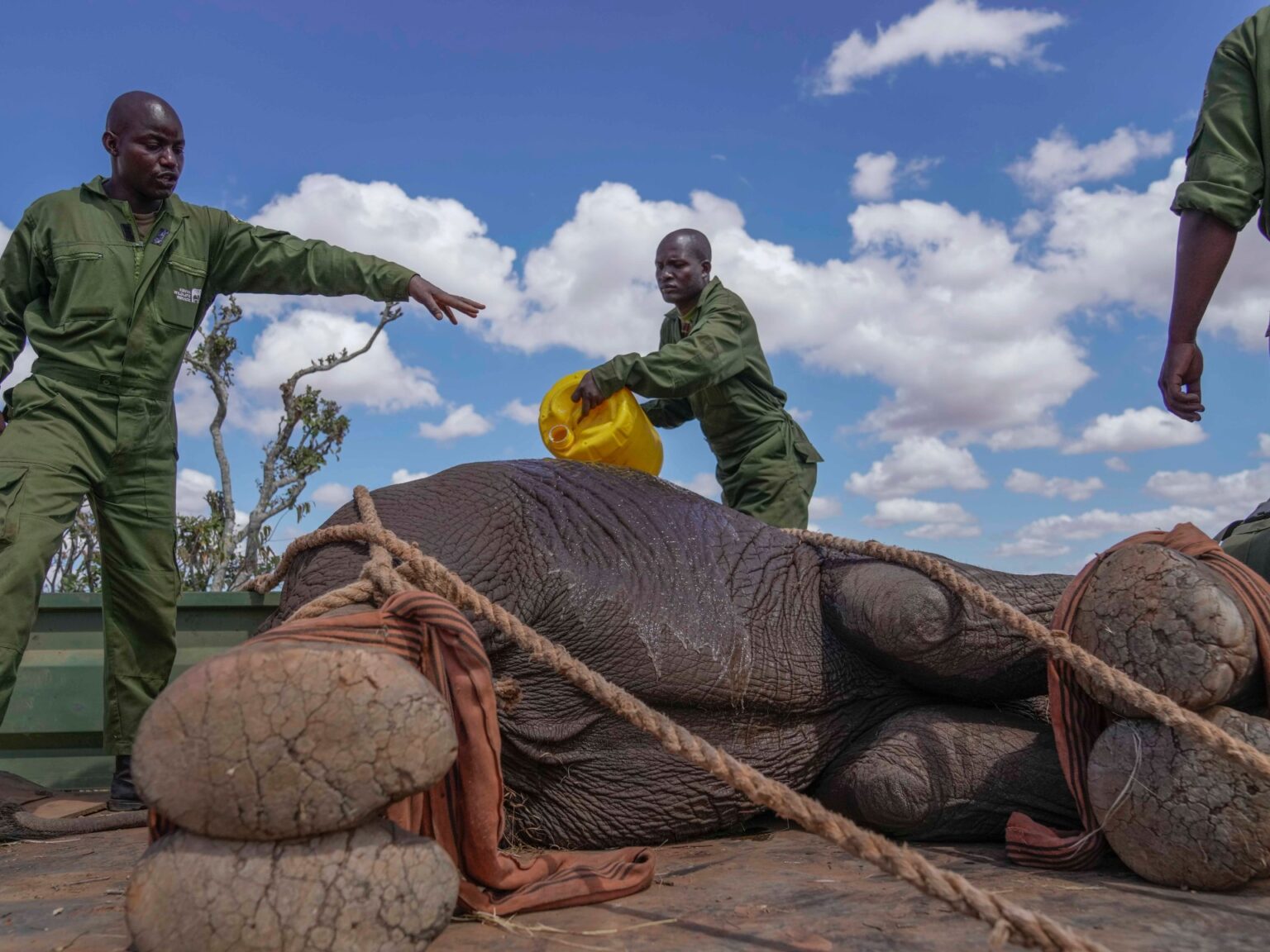Kenya is suffering from a problem, albeit a good one: the elephant population in the 42-square-kilometre (16-square-mile) Mwea National Reserve, east of the capital Nairobi, has flourished from its maximum capacity of 50 to a whopping 156, overwhelming the ecosystem and requiring the relocation of about 100 of the largest land animals. It hosted 49 elephants in 1979, and their population has grown.
On Monday, Tourism Minister Rebecca Miano oversaw the translocation of five elephants to the expansive Aberdare National Park, located in central Kenya. Fifty other elephants are set to be relocated, but a date hasn’t been announced.
According to Kenya Wildlife Service Director General Erustus Kanga, the overpopulation in Mwea highlighted the success of conservation efforts over the last three decades.
“This shows that poaching has been low and the elephants have been able to thrive,” Kanga said.
Experts started relocating 50 elephants last week to the expansive 780-square-kilometre (301-square-mile) Aberdare National Park in central Kenya. As of Monday, 44 elephants had been moved from Mwea to Aberdare, with six others scheduled for Tuesday.
The process started at dawn and involved a team of more than 100 wildlife specialists, with equipment ranging from specially fitted trucks to aircraft and cruisers. A fixed-wing aircraft conducted aerial surveillance to track down herds of elephants, which naturally move in small families of about five. The craft was in constant communication with two helicopters used to herd and separate the elephants to ensure they were relocated with their family units.
Aboard one of the helicopters is a spotter, on the lookout for elephants, and a veterinarian with a tranquiliser gun.
Once an elephant is sedated, a ground team of veterinary specialists and rangers rushes to find it and clear thickets to make way for transport crews. The animal’s vitals are monitored as another group of rangers works on lifting the massive creature, weighing hundreds of kilogrammes, onto specialised trucks, to be driven 120km (74 miles) to a new home.
Kanga, the wildlife service director, said the relocation also aimed at curbing human-wildlife conflict.
Boniface Mbau, a resident of the area, said: “We are very happy that the government has decided to reduce the number of elephants from the area. Due to their high numbers, they did not have enough food in the reserve, and they ended up invading our farms.”
The project has cost at least 12 million Kenyan shillings ($93,000), the wildlife agency said.
Kenya’s national parks and reserves are home to a variety of wildlife species and attract millions of visitors annually, making the country a tourism hot spot.
Read the full article here

